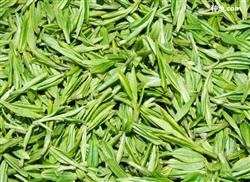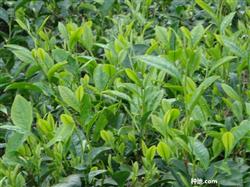How to control tea diseases and insect pests?

How to control tea diseases and insect pests? Please guide the deep processing of tea the meaning of tea deep processing refers to the use of fresh tea leaves, finished tea as raw materials, or tea, tea factory waste products, scraps as raw materials, the use of corresponding processing technology and means to produce products containing tea. Tea-containing products may take tea as the main body, or other substances as the main body. The production of green food for tea should proceed from the whole ecosystem such as crop diseases, insect pests and weeds, and comprehensively apply various control techniques to create ecological environment conditions that are not conducive to the breeding of diseases, insect pests and various natural enemies, maintain the balance and biodiversity of agricultural ecosystems, and reduce the losses caused by all kinds of diseases and insect pests. First, priority should be given to agricultural measures, such as selecting disease-resistant and insect-resistant varieties, cultivating strong seedlings, strengthening cultivation and management, ploughing and weeding, deep turning and drying the soil in autumn, cleaning the countryside, crop rotation, intercropping and interplanting, and a series of measures, such as prevention and control of diseases, insect pests and weeds. Second, try to use lights, colors and sexual attractants to trap and kill pests and catch pests mechanically. Special attention should be paid to early prevention, reducing the chance of primary infection and cutting off the cycle of re-infection. 3. Under special circumstances, when pesticides must be used, the guidelines for the use of tea pesticides should be observed and the corresponding pesticides with low toxicity and low residues should be used, but the use should be strictly controlled in the non-picking season such as closing the garden in winter. The main results are as follows: (1) leafhoppers were treated with pesticide before the nymph peak period from May to June and from August to September. 25% imidacloprid wettable powder, or 100g/ liter bifenthrin EC, or 20% fenpropathrin EC can be used for prevention and control. (2) whitefly whitefly, applied in mid-May and late-early October, can be controlled with 20% fenpropathrin EC or 25% imidacloprid wettable powder. (3) tea aphids can be treated with 25% imidacloprid wettable powder or 20% azophos in early and mid-May and late September-mid-October. B acetyl methyl EC or 20% fenpropathrin EC for prevention and treatment. (4) weevil A, during the peak period of adult occurrence from May to late June, the crown and soil surface were applied 1-2 times. Can 27% octyl sulfur be used? B triazophos EC, or 20% cypermethrin EC for prevention and treatment. (5) mites, 20% azophos? B acetyl methyl EC, or 20% fenpropathrin EC, or 25% imidacloprid wettable powder. (6) Tea cake disease can be used by more than 25%? B ketone wettable powder, or 75% chlorothalonil. (7) Tea moire leaf blight, tea anthracnose and tea ring spot can be controlled with 70% methyl topiramate or 80% carbendazim wettable powder. Click to get more tea planting techniques click to get more flower planting techniques
- Prev

How do you name tea according to the season?
How do you name tea according to the season? Please guide the name of the tea season, which is based on the 24 solar terms in China. There are nine of them, each of which is called by the name of solar terms at the time of picking. As it is related to the price of tea, tea farmers and tea merchants pay great attention to it. Since the beginning of the year, the order is as follows: 1.
- Next

What attention should be paid to planting tea in August?
How to manage tea from June to August? Please point out that the production of tea is mainly spring tea (Longjing tea) and summer tea. Therefore, during this period, we should focus on weeding, grass laying, drought resistance, seedling protection and pest control, so as to ensure that tea trees resist the harm of high temperature in summer, accumulate nutrients and prepare for the next tea season.
Related
- Fuxing push coffee new agricultural production and marketing class: lack of small-scale processing plants
- Jujube rice field leisure farm deep ploughing Yilan for five years to create a space for organic food and play
- Nongyu Farm-A trial of organic papaya for brave women with advanced technology
- Four points for attention in the prevention and control of diseases and insect pests of edible fungi
- How to add nutrient solution to Edible Fungi
- Is there any good way to control edible fungus mites?
- Open Inoculation Technology of Edible Fungi
- Is there any clever way to use fertilizer for edible fungus in winter?
- What agents are used to kill the pathogens of edible fungi in the mushroom shed?
- Rapid drying of Edible Fungi

